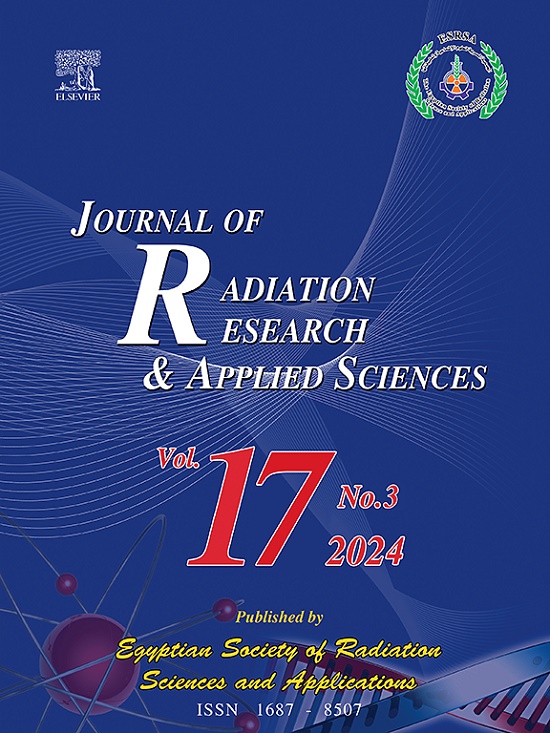具有非线性热辐射的Williamson纳米流体在指数拉伸/收缩表面上的化学反应流动
IF 1.7
4区 综合性期刊
Q2 MULTIDISCIPLINARY SCIENCES
Journal of Radiation Research and Applied Sciences
Pub Date : 2025-05-20
DOI:10.1016/j.jrras.2025.101630
引用次数: 0
摘要
在速度、化学物质、热辐射和变导热系数的一、二度系数影响下,采用Williamson纳米流体通过指数可穿透的收缩表面,对Darcy-Forchheimer模型进行了数值研究。利用经典变换将非线性偏微分方程转化为一种新的非线性偏微分方程形式,然后利用MATLAB软件内置的bvp4c函数对生成的系统进行解析。通过图形、表格和直方图分析,考察了物理因素对流量、热分布、质量曲线和工程量的同时影响。本文最显著的发现是Williamson纳米流体存在双溶液。结果表明,Williamson纳米流体因子对两种溶液分支的剪切应力分布均有正向影响。Eckert数、辐射和变热因素的变化对临界点没有影响,在χci(= - 0.6081)上保持不变。此外,对于一级速度滑移因子,可以观察到边界层分离的延迟,这降低了剪切应力。相反,边界层分离通过二阶速度滑移因子加速,改善了表面摩擦。这些在由多种溶液流动动力学组成的收缩表面上的发现,在现实世界的情况下是有用的。本文章由计算机程序翻译,如有差异,请以英文原文为准。
Chemically reactive flow of Williamson nanofluid with nonlinear thermal radiation over an exponentially stretching/shrinking surface
This study explore the numerical investigation of Darcy-Forchheimer model with Williamson nanofluid via an exponentially penetrable shrinking surface under the influence of both first and second-degree coefficient for velocity, chemical species, thermal radiation, and variable thermal conductivity. Classical transformations are used to form nonlinear PDEs into a new form of nonlinear ODEs and the resultant system is then resolved through the utilization of the bvp4c function built into MATLAB software. The concurrent impacts of the physical factors on flow, thermal distribution, mass curve, and engineering quantities were examined graphically, tabularly and histrogram analysis. The most notable findings of the current article are the existence of dual solutions for Williamson nanofluids. The outcomes show that Williamson nanofluid factors have positive impacts on the shear stress profile for both solution branches. The variations in Eckert number, radiation and variable thermal factors do not affect the critical point, which remains constant at Moreover, a delay in the boundary layer separation can be observed for the first-order velocity slip factor, which reduces the shear stress. In contrast, boundary layer separation accelerates by the second-order velocity slip factor and improves skin friction. These discoveries over a shrinking surface consisting of multiple solution flow dynamics have shown to be useful insight in real-world scenarios.
求助全文
通过发布文献求助,成功后即可免费获取论文全文。
去求助
来源期刊

Journal of Radiation Research and Applied Sciences
MULTIDISCIPLINARY SCIENCES-
自引率
5.90%
发文量
130
审稿时长
16 weeks
期刊介绍:
Journal of Radiation Research and Applied Sciences provides a high quality medium for the publication of substantial, original and scientific and technological papers on the development and applications of nuclear, radiation and isotopes in biology, medicine, drugs, biochemistry, microbiology, agriculture, entomology, food technology, chemistry, physics, solid states, engineering, environmental and applied sciences.
 求助内容:
求助内容: 应助结果提醒方式:
应助结果提醒方式:


